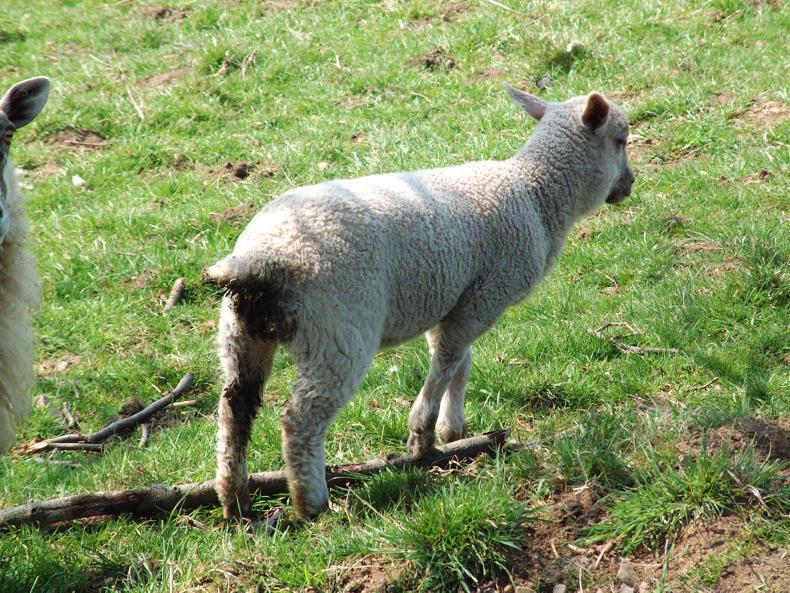Maximum hatching of nematodirus larvae may could occur up to two weeks earlier this year with peak hatching predicted by the Department during the last week of March, along the south coast of Ireland and the first week of April across the rest of the country.
Nematodirus affects lambs between six and 12 weeks of age causing diarrhoea, dehydration and weight loss, as well as mortality in untreated lambs.
It takes half a year before nematodirus eggs hatch and release infected larvae. This takes place in spring as soil temperatures increase, meaning the disease typically occurs in April, May and June as clinical signs seen two to three weeks after peak hatching. Lamb deaths can occur in some cases before clinical signs are seen, but ewes are not affected.
Treatment
Dosing with a suitable anthelmintic by the second week of April is recommended by the Department for flocks around the south coast of the country. Lambs across the rest of the country should be dosed from mid-April.
Nematodirus outbreaks are best prevented by keeping the current year’s lambs off pasture that was grazed by lambs or young calves in the previous year, but dosing will also help to decrease the risk of clinical disease and reduce pasture contamination for the next year.
Benzimidazoles (white drenches) remain the treatment of choice and are effective against both larval and adult stages of this worm. Repeat dosing may be needed in two- to three-week intervals as drenches do not cover lambs for re-infections.
Read more
Sheep management: high nematodirus risk
Tackling nematodirus and coccidiosis in young lambs
Maximum hatching of nematodirus larvae may could occur up to two weeks earlier this year with peak hatching predicted by the Department during the last week of March, along the south coast of Ireland and the first week of April across the rest of the country.
Nematodirus affects lambs between six and 12 weeks of age causing diarrhoea, dehydration and weight loss, as well as mortality in untreated lambs.
It takes half a year before nematodirus eggs hatch and release infected larvae. This takes place in spring as soil temperatures increase, meaning the disease typically occurs in April, May and June as clinical signs seen two to three weeks after peak hatching. Lamb deaths can occur in some cases before clinical signs are seen, but ewes are not affected.
Treatment
Dosing with a suitable anthelmintic by the second week of April is recommended by the Department for flocks around the south coast of the country. Lambs across the rest of the country should be dosed from mid-April.
Nematodirus outbreaks are best prevented by keeping the current year’s lambs off pasture that was grazed by lambs or young calves in the previous year, but dosing will also help to decrease the risk of clinical disease and reduce pasture contamination for the next year.
Benzimidazoles (white drenches) remain the treatment of choice and are effective against both larval and adult stages of this worm. Repeat dosing may be needed in two- to three-week intervals as drenches do not cover lambs for re-infections.
Read more
Sheep management: high nematodirus risk
Tackling nematodirus and coccidiosis in young lambs






 This is a subscriber-only article
This is a subscriber-only article











SHARING OPTIONS: